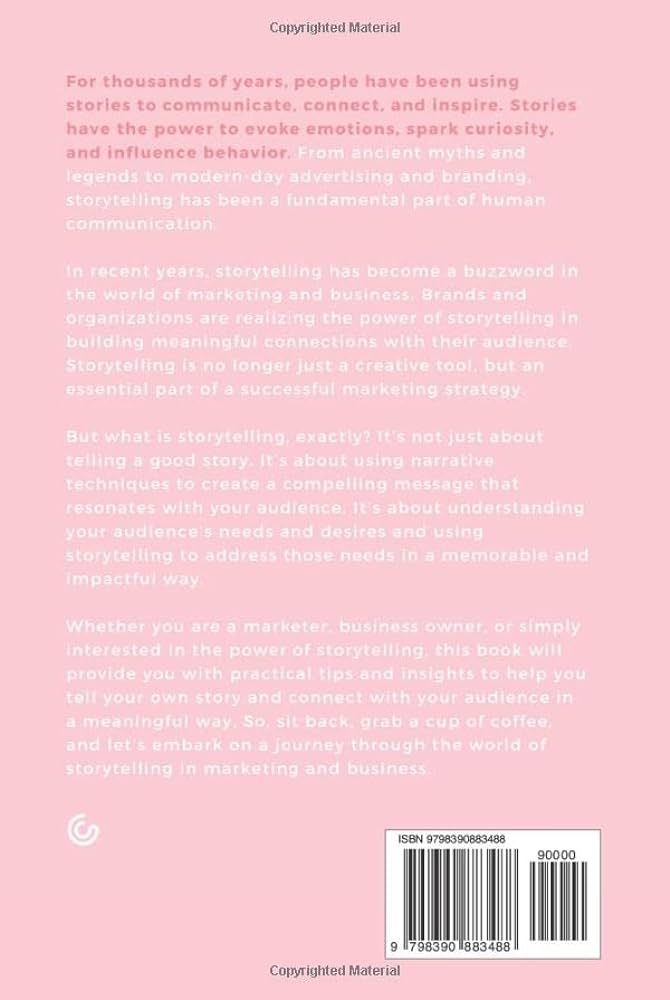What Are The Basic Components Of Oratory?
Are you curious about the components of oratory? Well, you’ve come to the right place! In this article, we’ll explore the key elements that make up the art of public speaking. Whether you’re a budding speechwriter or simply interested in improving your communication skills, understanding the components of oratory is essential. So, let’s dive in and uncover what it takes to deliver a powerful and persuasive speech!
When it comes to oratory, there are several components that work together to create a captivating and impactful speech. From the introduction to the conclusion, every part plays a crucial role in engaging your audience and conveying your message effectively. Whether it’s the power of words, the use of body language, or the ability to connect emotionally, each component brings its own unique contribution to the art of oratory.
The first component of oratory is the mastery of rhetoric. Rhetoric focuses on the skillful use of language to persuade, inform, and inspire an audience. It involves employing techniques such as persuasive appeals, rhetorical devices, and effective word choice to make your speech memorable and compelling. By harnessing the power of rhetoric, you can capture your audience’s attention and sway them to your point of view. So, get ready to discover the secrets behind the art of oratory and unlock your full potential as a skilled speaker!
What Are the Components of Oratory?
In the world of public speaking and rhetoric, oratory is a powerful tool that can captivate audiences, inspire change, and make a lasting impact. But what exactly are the components that make up effective oratory? In this article, we will explore seven key elements that are essential to the art of oratory. From mastering the art of voice modulation to crafting compelling arguments, understanding these components will help you become a more persuasive and influential speaker.
The Power of Voice Modulation
One of the most crucial components of oratory is voice modulation. A skilled orator knows how to use their voice as a powerful instrument of expression and persuasion. This involves varying the pitch, tone, volume, and speed of their speech to convey different emotions and engage the audience. By using pauses, emphasis, and inflections effectively, an orator can capture the attention of listeners and evoke powerful emotions. Voice modulation not only adds depth and richness to a speech but also helps in creating a memorable and impactful experience for the audience.
In addition to voice modulation, a good orator also pays attention to body language and non-verbal cues. Facial expressions, gestures, and posture contribute to the overall delivery and impact of a speech. By incorporating appropriate body language, an orator can enhance their message, establish credibility, and connect with the audience on a deeper level.
In summary, voice modulation and body language are key components of oratory as they allow the speaker to convey emotions, engage the audience, and create a lasting impression.
The Art of Persuasion
Another essential component of oratory is the art of persuasion. An effective orator knows how to craft a well-structured and compelling argument that convinces and sways the audience to their point of view. This involves using logical reasoning, evidence, and persuasive techniques such as ethos, pathos, and logos. Ethos appeals to credibility and the character of the speaker, pathos appeals to emotions, and logos appeals to logic and reason.
An orator must also be skilled in the art of storytelling. By using narratives, anecdotes, and examples, an orator can make their message relatable and memorable. Stories have the power to captivate an audience, evoke emotions, and effectively convey complex ideas.
Furthermore, a persuasive speech is backed by solid research and evidence. An orator must invest time in gathering and presenting relevant data, statistics, and expert opinions to support their arguments. This adds credibility to their message and strengthens their position.
The Importance of Delivery
Delivery is another critical component of oratory. A well-delivered speech can have a profound impact on the audience. An orator must have a clear and confident speaking style, with a good pace and articulation. This ensures that the audience can understand and follow the message without any confusion.
Effective use of vocal variety, including pitch, tone, rhythm, and volume, can help maintain the audience’s interest and engagement throughout the speech. Additionally, using appropriate pauses and emphasis can create emphasis on key points and allow the audience to internalize important concepts.
Furthermore, taking into account the physical aspects of delivery, an orator must maintain eye contact with the audience, use appropriate gestures, and have good posture. These non-verbal cues contribute to the overall impact and authenticity of the speech.
The Power of Rhetorical Devices
Rhetorical devices are linguistic tools that can add flair, emphasis, and memorable elements to a speech. They help engage the audience and make the message more persuasive and memorable. Some commonly used rhetorical devices include metaphors, similes, alliteration, repetition, and parallelism. These devices create imagery and rhythm, making the speech more engaging and effective.
For example, the use of metaphors can help simplify complex ideas, make them relatable, and create a lasting impression. Alliteration and repetition can add a musical quality to the speech, making it more memorable and impactful. By incorporating rhetorical devices strategically, an orator can elevate their speech and engage the audience at a deeper level.
In summary, the use of rhetorical devices is a powerful component of oratory that adds creativity, emphasis, and engagement to a speech.
The Value of Authenticity
Authenticity is a crucial component of oratory. An orator must be true to themselves and their message. The audience can sense when a speaker is genuine, which helps establish trust and credibility. By sharing personal stories, experiences, and emotions, an orator can connect with the audience on a deeper level and make the message more relatable.
Authenticity also involves being passionate and invested in the topic being discussed. When an orator genuinely believes in what they are speaking about, their passion and enthusiasm shine through, captivating the audience and inspiring them to action. By being authentic, an orator can create a meaningful connection with the audience and make a lasting impact.
Key Takeaways: What are the components of oratory?
- Oratory is the art of public speaking.
- The components of oratory include delivery, voice modulation, gestures, and body language.
- Delivery involves the way the speaker speaks, emphasizing key points, and maintaining a good pace.
- Voice modulation refers to the variation in pitch, tone, and volume to express emotions and engage the audience.
- Gestures and body language help convey meaning, show confidence, and connect with the audience.
Frequently Asked Questions
Welcome to our FAQ section on the components of oratory! Below, you’ll find answers to some commonly asked questions about the different elements that make up effective oratory. Whether you’re a student preparing for a speech or a professional honing your public speaking skills, understanding these components can help you communicate with impact and persuade your audience.
1. How important is body language in oratory?
Body language plays a crucial role in oratory as it can enhance or detract from your message. Nonverbal cues, such as facial expressions, gestures, and posture, can convey confidence, sincerity, and enthusiasm. They can also help establish a connection with your audience and make your speech more engaging and memorable.
For example, maintaining eye contact with your audience can create a sense of trust and engagement. Using appropriate hand gestures can emphasize key points and add emphasis to your words. Paying attention to your body language allows you to reinforce your message and communicate effectively with your audience.
2. What is the significance of voice modulation in oratory?
Voice modulation refers to the intentional changes in tone, pitch, volume, and pace of speech. It helps captivate the audience’s attention, convey emotions, and emphasize important points. By varying your voice, you can add depth and expressiveness to your words, making your speech more dynamic and engaging.
For instance, using a slower pace and lower pitch can create a sense of seriousness or gravity. Conversely, speaking faster and with higher pitch can convey excitement or enthusiasm. Voice modulation allows you to evoke the desired emotional response from your audience and keep them interested in what you have to say.
3. How does storytelling contribute to effective oratory?
Storytelling is a powerful tool in oratory as it helps connect with the audience on a deeper level and make information more relatable and memorable. By weaving personal anecdotes, case studies, or narratives into your speech, you can engage your audience’s emotions, capture their attention, and drive home your main message.
Stories have the ability to evoke empathy, stimulate imagination, and inspire action. They humanize the information being presented and enable the audience to connect emotionally with the speaker. Incorporating storytelling into your oratory can make your speech more impactful and leave a lasting impression on your listeners.
4. What role does rhetoric play in oratory?
Rhetoric is the art of persuasive speaking and encompasses various techniques and strategies to influence the audience’s beliefs, attitudes, and actions. It involves the skillful use of language, including rhetorical devices, such as similes, metaphors, and analogies, to make arguments more compelling and persuasive.
Rhetoric helps speakers structure their speech effectively, build logical arguments, and appeal to the emotions of the audience. It allows you to present your ideas convincingly, anticipate counterarguments, and refute opposing views. By mastering rhetorical techniques, you can make your oratory more persuasive and impactful.
5. How does audience analysis contribute to successful oratory?
Audience analysis is a critical component of effective oratory, as it helps you tailor your message to the specific needs, interests, and values of your audience. By understanding your audience’s demographics, beliefs, and expectations, you can choose the most relevant examples and arguments to resonate with them.
When you consider your audience, you can adapt your language, tone, and style to make your speech more relatable and persuasive. Additionally, audience analysis helps you anticipate potential objections or concerns, allowing you to address them proactively. By connecting with your audience and meeting their needs, you can ensure that your oratory leaves a lasting impact.
How to Perform an Oratory
Summary
So, now you know what makes up a good speech. First, you need a strong introduction to grab people’s attention. Then, make sure to organize your ideas in a clear and logical way. Next, use evidence and examples to support your points. Remember to use a variety of techniques, like using emotion, humor, or powerful language. And finally, end your speech with a memorable conclusion that leaves a lasting impact. By following these components, you’ll be well on your way to becoming a great orator!



